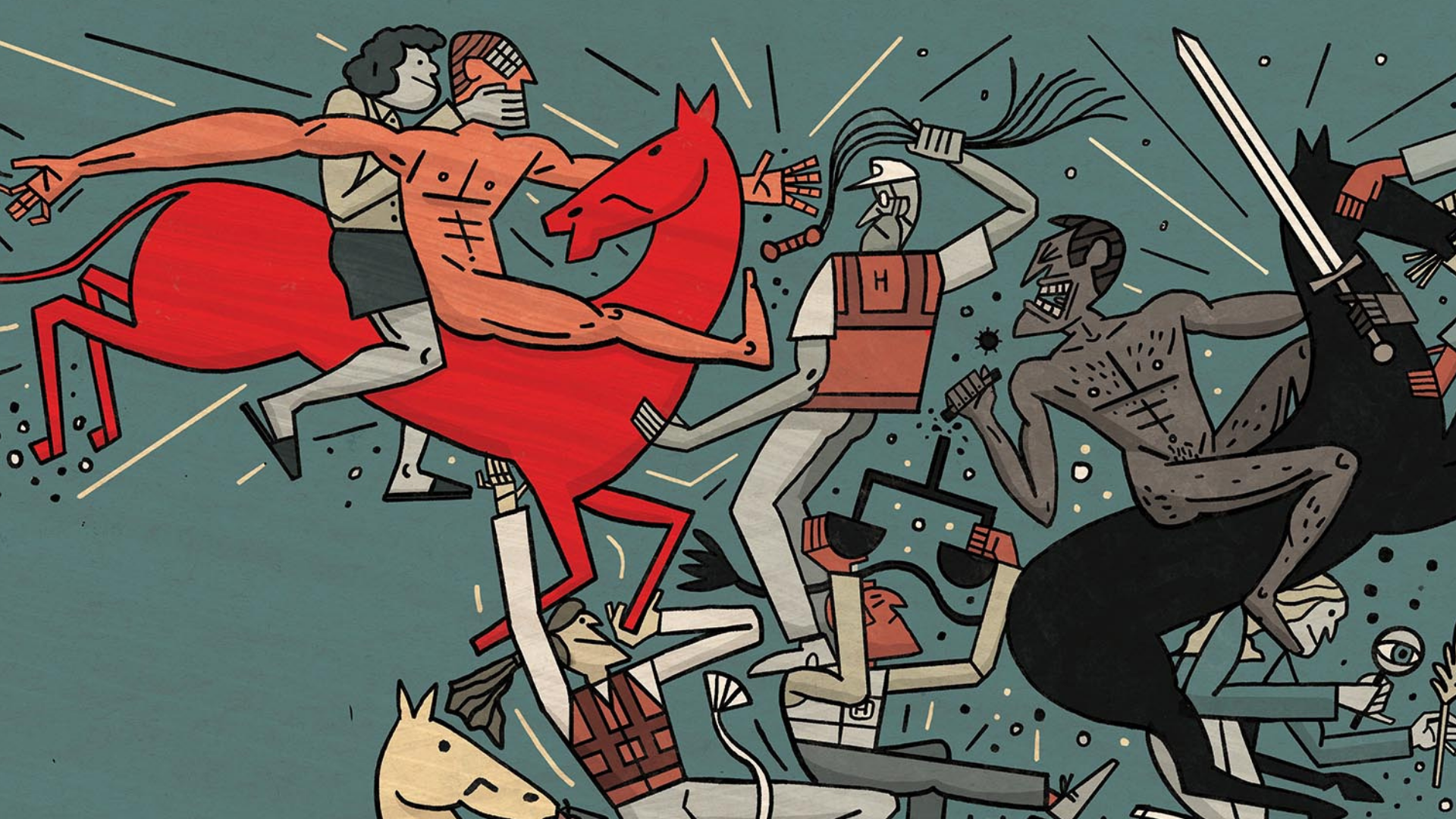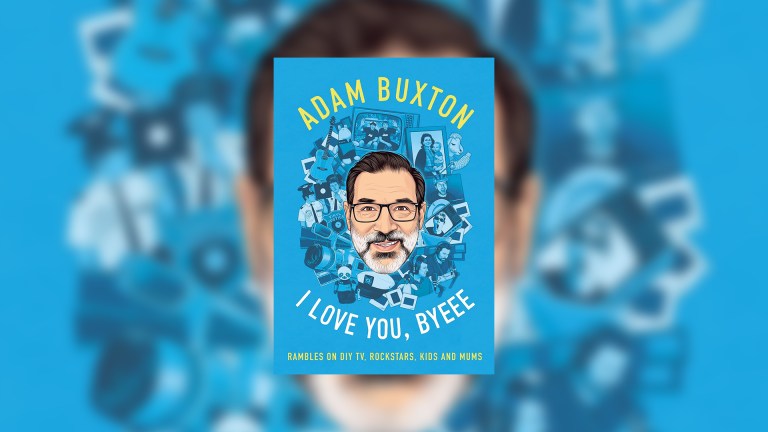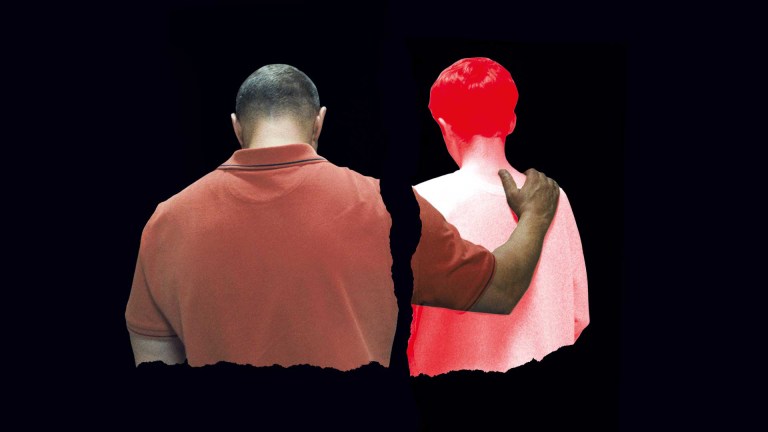The rider on the white horse has a whole quiver full of arrows: viruses and bacteria and other nano-tiny things that cause us harm. We’re frightened of some of them more than others, and increasingly we’re getting this the wrong way round. We’re frightened of viruses, yet when we pay attention we deal with them effectively. We’re less frightened of bacteria when they infect us because we think we can take an antibacterial treatment in the form of an antibiotic and this will fix everything. But bacteria are smart and they evolve. Whatever doesn’t quite kill them all makes the survivors stronger.
They are searching for new antibiotics and using AI to find old antibiotics that can be repurposed
It isn’t new, unknown forms of bacteria we should fear, it’s their new microbial superpowers of resistance. And then there’s the hope. Standing between rampant bacterial infections and us are the stewards of antimicrobial resistance. Stewards are some of the most remarkable people in the whole medical world because the part of the line they hold is really complicated, mixing cutting-edge microbiology with good old human communication skills.
They are searching for new antibiotics and using AI to find old antibiotics that can be repurposed. And while they work at this, they politely remind us not to take any of these for granted. That we have to prescribe and take antibiotics as if they are the most precious thing on Earth, because they are. Stewards save our lives every day and buy us time to discover what comes after antibiotics, that will once again defeat bacterial infections and secure a new, extraordinary medical age.
War
Each conflict teaches us more about recovery.
When the rider of the blood-red horse looks out across the battlefield landscapes of the 21st century, it’s all very familiar. Just as they did in Albrecht Dürer’s time, wars today last decades, violence and brutality roaming across borders and continents.
Combatant factions twist back and forth, allegiances shift. Zealot and mercenary armies come and go with the seasons. Cities are besieged, and the longer they hold out the worse their fate. Liberation, if it comes, always comes at a cost, the bloodiest part of war. It’s not just the smashed cities, scorched fields and poisoned rivers that the Horseman recognises and celebrates.
Advertising helps fund Big Issue’s mission to end poverty
It’s all the millions of people left out in the ruins surviving just long enough for him to prey on or to clear the way for the others in his company. There are rich pickings among those who have been smashed by the fighting itself, or starved into flight, hundreds of thousands all over the world. They may be wounded soldiers or brutalised families with children, or just children with no one. But there are other humans who go out to give them care, no matter what, and hold a line against the blood-red horse no matter how indistinct.
They can provide expertise in medical care, rebuilding, technical support. They can save the children
Humanitarians have always sought to bring relief in the worst of circumstances, but in particular since 1859 when civilian volunteers in what would become the International Committee of the Red Cross stepped out to treat the wounded and bury the dead from the battle of Solferino, regardless of which ragged uniform they wore or how they had come there.
If we recognise the line there, we can track it into our own time. Humanitarians have modernised now. There are smaller groups as well as the global organisations, formed by the young, the dedicated and the impatient. They can crowd-fund themselves to wherever they are needed. They can provide expertise in medical care, rebuilding, technical support. They can save the children. They do paperwork and report on numbers and the means they use to ensure the lives beyond survival of those they went to help.
War especially dislikes those prepared to do paperwork because they give the rest of the world the means to understand the chaos and do better next time. Humanitarians have a few things to figure out, like what neutrality means now and in the future, but in the meantime they still go out into the battlefield and hold whatever line they can build on behalf of the humans they find there.
Famine
For the first time in human history, nobody in the world should be starving.
All 21st-century famines are man-made. We can’t blame the weather or our disruption of our climate. Modern famines have a unique feature: they are about hunger, not absence of food. In countries broken by civil war, asymmetric war, siege war, there is always food somewhere, sitting in locked warehouses or on the black market.
Advertising helps fund Big Issue’s mission to end poverty
But all of it, as well as the fuel needed to move vehicles and water needed to drink and cook, and drive power to turn on little stoves for cooking, is prohibitively expensive. There is an absence of money, or the prospect of money, so the hungriest become dependent on aid agencies, who also have their food sitting in a warehouse, waiting for a firebreak in the fighting or the politics, so that it can be distributed.
Sentinels warn farmers to watch out, protect their crops
The rider of the black horse has always understood how this works. He carries a pair of weight scales in his hand. On one side a burdensome amount of money, to buy what is on the other: usually not enough, poor-quality food. In previous centuries, famines have been about the absence of food, where more of the nano-tiny things from the microbiological universe reach out to invisibly do us harm. There are fungi that attack the plants we grow to eat, and can wipe out crops and the people who depend on them. These fungi travel, stowing away on ships or hitchhiking on the wind.
Holding the line against them depends on knowing where they are, and where they are likely to go next. Sentinels do this for us by working in sentinel fields, planted and monitored for the first signs of attack. They maintain a worldwide agricultural sentinel network, and their alerts move faster than the fungi on the wind, warning farmers to watch out, protect their crops, or that it’s time to change their seed stock to something that has natural resistance features.
Sentinels search for crops with natural resistance features all the time, because a potato or a wheat strain or a banana that can fend for itself against disease and blight, is one that doesn’t need spraying with chemicals, and is more easily grown by those who have little. And the line against famine is bio-fortified with plants that sentinels are breeding to be as nutritious as possible, to make a little go a long way to balance the scales in favour of the hungry human.
Death
This rider is hard to halt but we know how to look after those who are left behind.
When the Pale Rider enters view, what happens next is almost always seen as a failure. We think that death means the line has not held and the treatments have failed. We count, we bury, we move on. We have grown unused to looking back at the last Horseman and reflecting on his presence.
Advertising helps fund Big Issue’s mission to end poverty
Those who hold the medical line for us at the moment have, when they’ve had time, spoken about not having enough preparation to provide care for their dying patients. That they have had to learn how to do this with the Pale Rider already filling the room, death after death, day after day. They have held an unfamiliar line, not a line they were trained for in medical school, but not a new line either.
When they finally get the time to look up from their work, they will see there are others already there who have chosen to stand for the dead as both their first response and life’s work. Forensic humanitarians secure humanity beyond life by securing good and decent management of the dead.
The four of them are always there, somewhere, reminding us of what is necessary for us to survive
They do it by supporting those in the room with the rider or those on the ground in the aftermath of catastrophe and immediate, immense mortality. Forensic humanitarians also look for the missing, the stolen, the summarily executed, the lost. They work to confirm identities for the dead, no matter how complex the technical challenge. They do this so that eventually the families and those left behind might have the comfort of certainty, no matter how hard the knowing.
Forensic humanitarians can show us how to lead the last Horseman quietly and calmly from the room, and send him back to join his company. The Four of them are always there, somewhere, reminding us of what is necessary for us to survive. But hopefully, each time we notice them, they will be a little further off in the distance.
Dr Emily Mayhew is an author and medical military historian. Her book The Four Horsemen and the Hope of a New Age is out on May 6 (Riverrun, £20)










